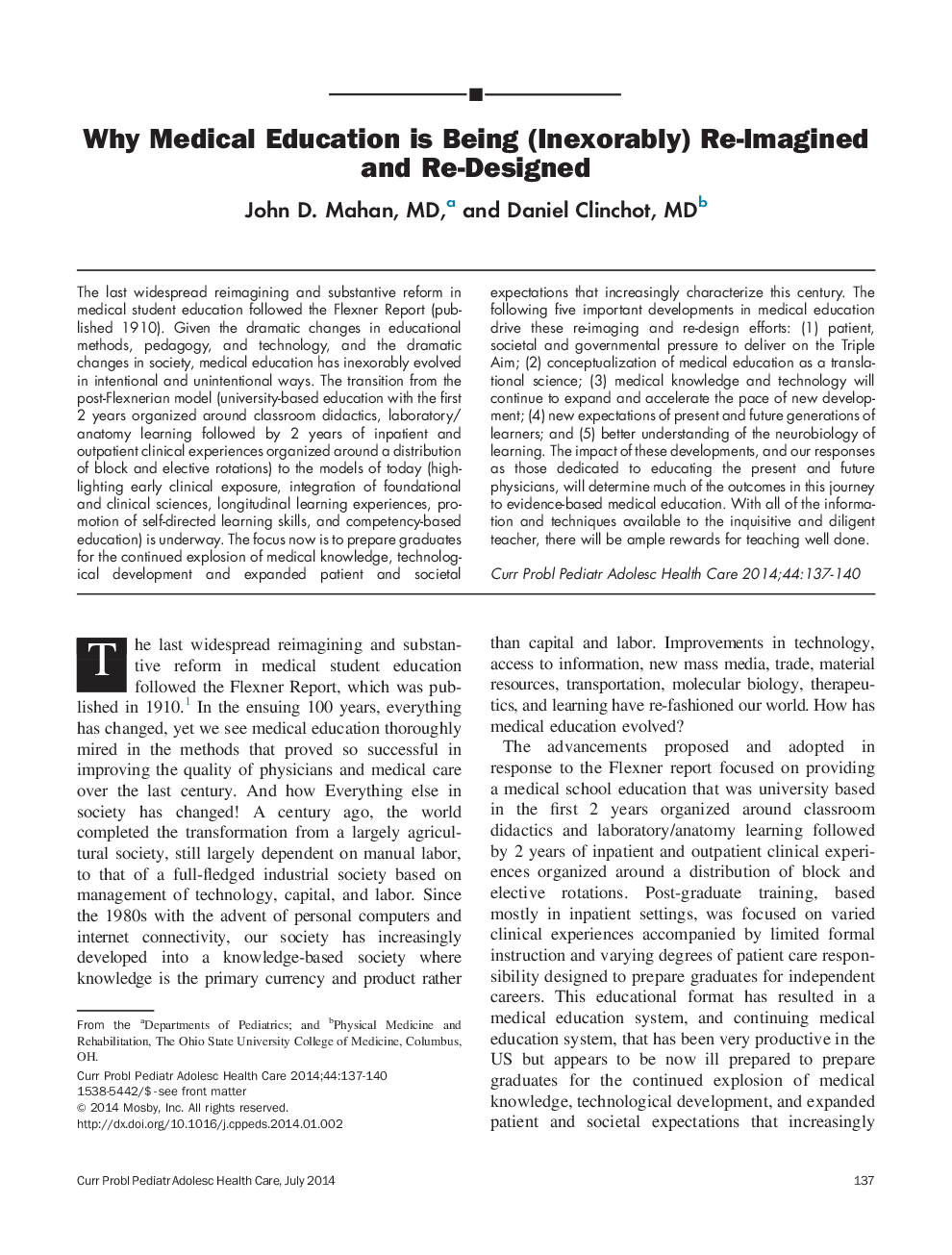| Article ID | Journal | Published Year | Pages | File Type |
|---|---|---|---|---|
| 4152633 | Current Problems in Pediatric and Adolescent Health Care | 2014 | 4 Pages |
The last widespread reimagining and substantive reform in medical student education followed the Flexner Report (published 1910). Given the dramatic changes in educational methods, pedagogy, and technology, and the dramatic changes in society, medical education has inexorably evolved in intentional and unintentional ways. The transition from the post-Flexnerian model (university-based education with the first 2 years organized around classroom didactics, laboratory/anatomy learning followed by 2 years of inpatient and outpatient clinical experiences organized around a distribution of block and elective rotations) to the models of today (highlighting early clinical exposure, integration of foundational and clinical sciences, longitudinal learning experiences, promotion of self-directed learning skills, and competency-based education) is underway. The focus now is to prepare graduates for the continued explosion of medical knowledge, technological development and expanded patient and societal expectations that increasingly characterize this century. The following five important developments in medical education drive these re-imaging and re-design efforts: (1) patient, societal and governmental pressure to deliver on the Triple Aim; (2) conceptualization of medical education as a translational science; (3) medical knowledge and technology will continue to expand and accelerate the pace of new development; (4) new expectations of present and future generations of learners; and (5) better understanding of the neurobiology of learning. The impact of these developments, and our responses as those dedicated to educating the present and future physicians, will determine much of the outcomes in this journey to evidence-based medical education. With all of the information and techniques available to the inquisitive and diligent teacher, there will be ample rewards for teaching well done.
